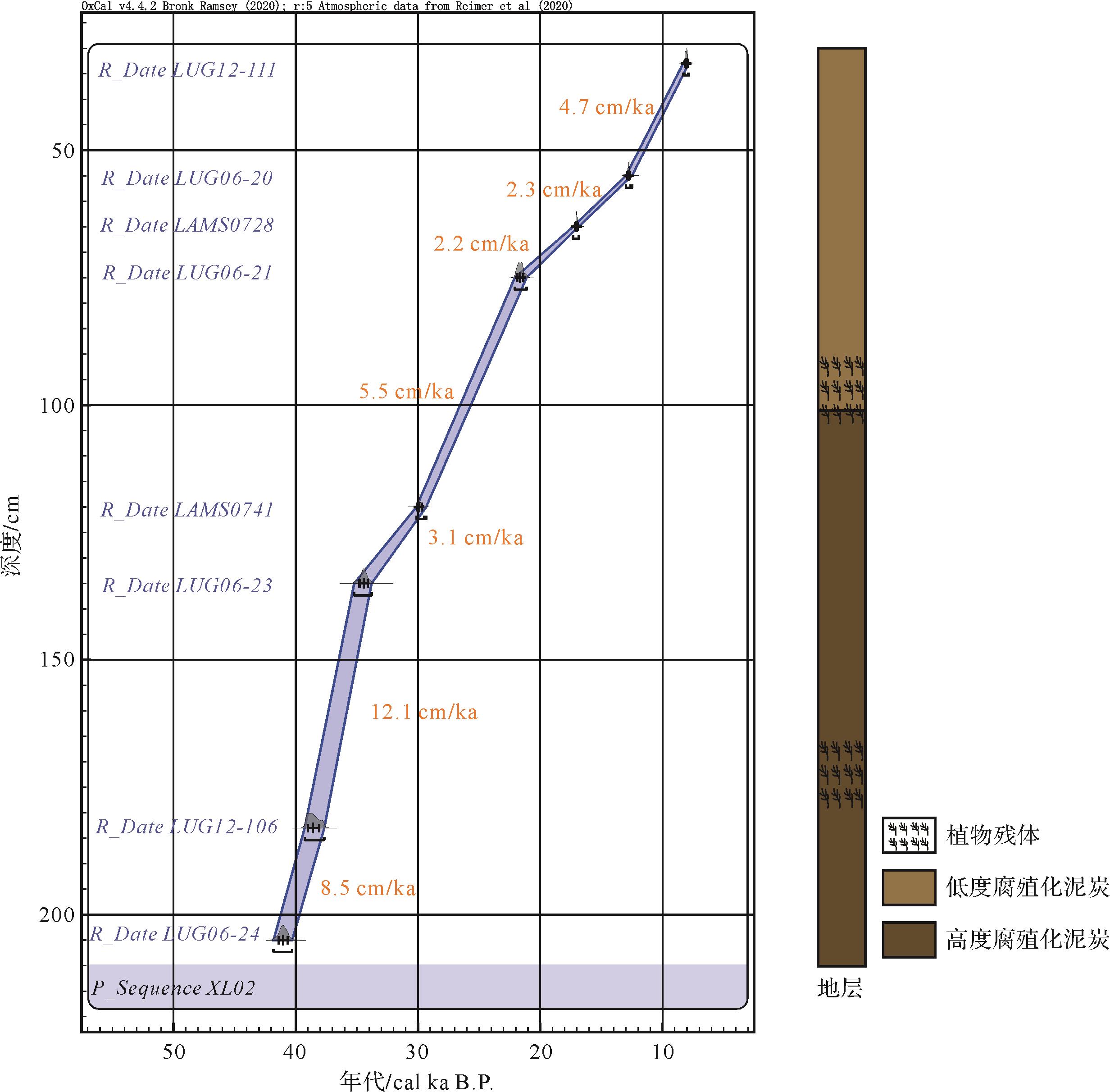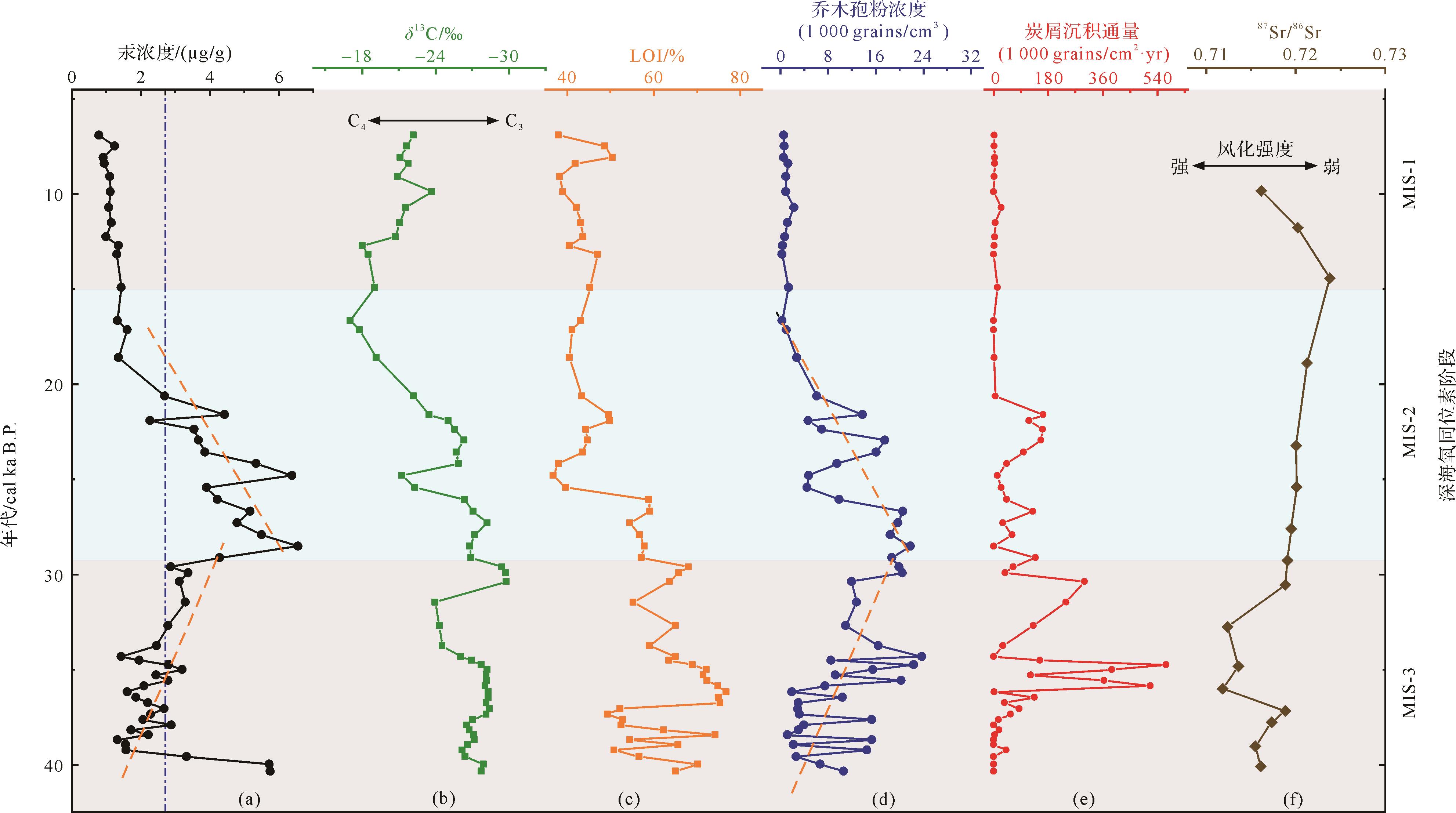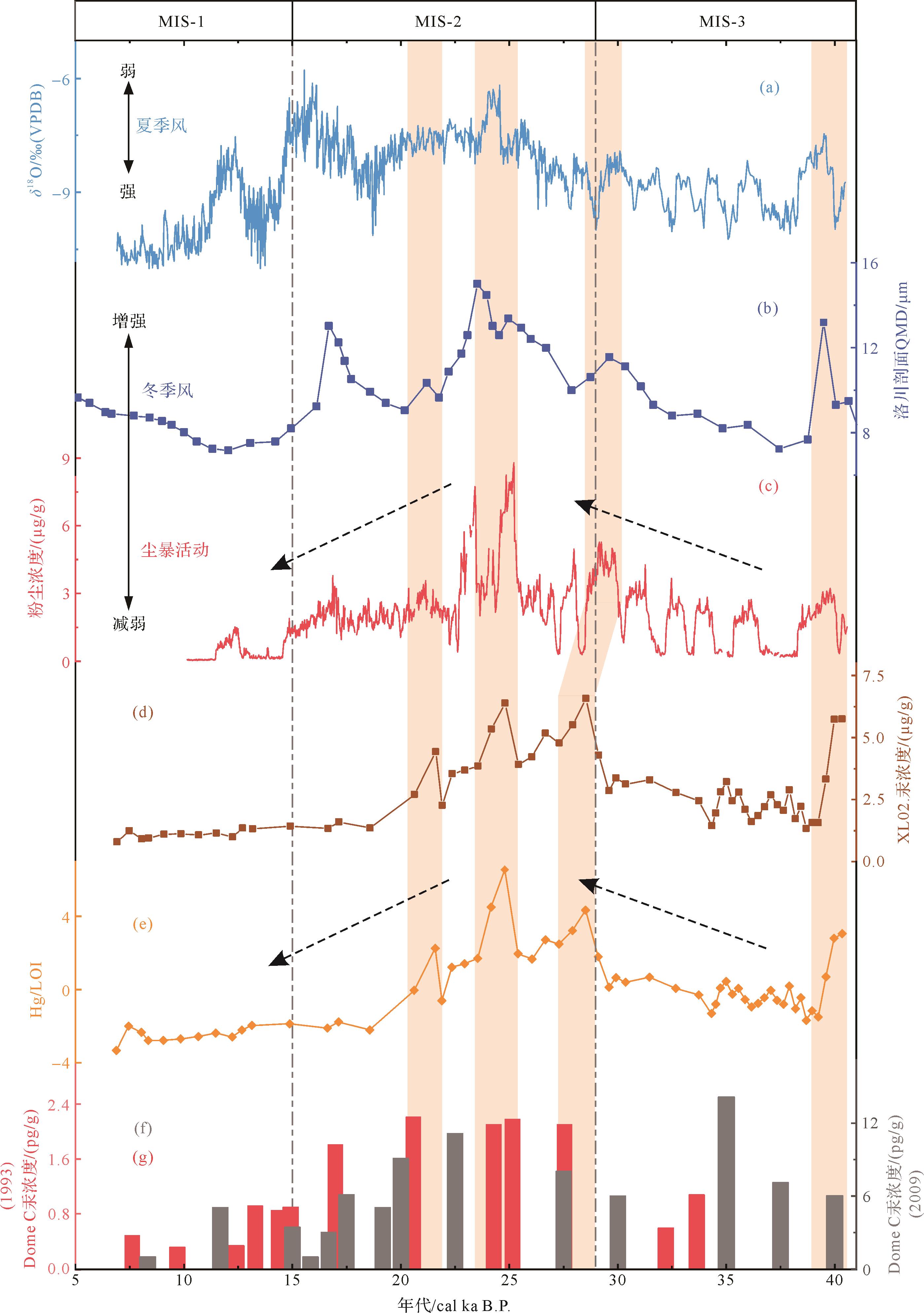HTML
-
汞(Hg)是一种剧毒重金属,在环境中主要以元素汞Hg(0)、二价汞Hg(Ⅱ)、颗粒汞Hg(P)等形式存在[1⁃2]。自然界中汞主要有自然过程(如火山活动、地表物质风化、森林火灾等)和人类活动(如矿产开发、金属冶炼、化石燃料燃烧、纺织印染等)两个来源。在过去几百年特别是自工业革命以来,由于人类活动的不断增强导致大量Hg被释放到自然界中,从而Hg污染成为全球备受关注的环境问题。汞在自然界的循环迁移过程主要包括由陆地/海洋释放到大气,随大气迁移并伴随干湿沉降落到地表/海洋,在陆地/海洋发生还原作用后再次进入下一循环[2]。火山活动是汞的重要自然来源之一,大规模的火山活动会导致地层中挥发性气体包括汞的大量释放[3]。火山喷发后,部分携有含汞物质的火山碎屑流会迅速流动、熔结并沉积地层中;含汞的火山灰进入大气层,遇冷凝结之后通过粉尘沉降输送至地表,并与土壤中的有机质、硫化物以及黏土等形成络合物,最终被固定在沉积物中[4]。
大量研究表明,沉积物中汞的浓度与沉积通量会受地表径流、土壤侵蚀、腐殖质分解、森林火灾以及大气沉降等多方面环境因素的控制,而不论对海洋还是陆地沉积物而言,大气沉降作用对汞的沉积贡献尤为显著[5⁃6],如南极Dome C冰芯过去67万年的汞沉积记录即揭示了该冰芯中的汞浓度在冰期较大,与同一时期较高的大气粉尘输入通量一致[7]。实际上,汞由大气输入到地表的过程中,除了直接落至地表沉积外,森林群落也是大气汞吸收汇集的主要场所。研究显示,在植被生长期间,地上植被生物体中能够积累大量的汞,尤以热带/亚热带森林地区的地表汞储存量最高,其次为温带针叶林和草原地区,地表植物对汞的吸收是大气汞输送至陆地生态系统的重要途径[8⁃9]。大气汞能够在植物叶片通过气孔进行气体交换时被叶片吸收,或通过干湿沉降附着在植物体上,或附着在植被凋落物上进而沉积于地表[10]。有研究发现,在青藏高原东南部的冰川—森林演替生态系统中,汞的干沉降是地表汞沉积的主要来源,而苔藓地衣、木本植物对汞的吸收也增加了地表汞的沉积通量[11]。此外,一些人类活动,诸如人为地燃烧煤炭、木材等活动,包括天然森林/草原火灾等造成的生物质燃烧则会导致地表汞和储存于植物体内汞的释放[1,12⁃13]。
迄今为止,关于地质时期较长时间尺度的汞沉积相关研究在国内尚未见太多报道,现有为数不多的相关工作研究时段也大多集中在末次冰消期以来特别是近几百年以来[14⁃15]。由于过去数百年来人类活动已经对环境中汞的迁移转化产生了很大影响,难以准确识别自然状态下汞的沉积过程及其可能的影响机制。雷州半岛地处我国热带北缘地区,对该地区末次冰期以来的古气候重建近年来已取得较多进展[16⁃19],在大量前期工作的基础之上,本文以取自我国热带北缘雷州半岛北部下录地区的泥炭沉积作为研究材料,对其汞浓度进行了测试分析,并结合同一岩心的孢粉、炭屑、有机碳同位素(δ13Corg)等多种气候环境代用指标进行综合分析,旨在揭示在人类活动影响基本可以忽略的地质时期,本地区汞的沉积过程、特征及其影响机制。
-
雷州半岛地处我国热带与南亚热带之间的气候过渡区,夏季主要受东亚夏季风和印度季风影响,冬季则受西伯利亚—蒙古高压影响以偏东北风为主;年均气温23 ℃左右,最低月均温超过15 ℃;年均降水量约1 600 mm,主要集中在4—10月。该地区整体上海拔低,地势平缓,以台地为主,次为海积平原。现代植被以热带季雨林为主。第四纪以来,本地区火山活动强烈,火山岩分布广泛,晚更新世以来的火山主要包括广东湛江湖光岩、龙水岭,海南北部长流以及雷虎岭一带(图1)。
本文所用岩心XL02钻孔(21°18′20″ N,109°49′32″ E)位于湛江市遂溪县下录地区,采样点海拔高约5~8 m。该岩心全长210 cm,顶部约30 cm为耕作层(未采样),钻孔剖面以高度发育的木本和草本泥炭沉积为主,泥炭中夹有不同含量的淤泥质黏土或褐黄色亚砂土,其下深度在30~105 cm为弱腐殖化浅棕色泥炭,在105~210 cm主要由腐殖化程度较高的深棕色泥炭组成,木本残体主要分布在90~105 cm和165~180 cm之间(图2)。前期工作表明,XL02孔岩心沉积连续,不曾发生间断,也未受到历史上高海平面时期的海侵影响,有效地记录了雷州半岛北部地区近四万年以来的气候环境变化和古火灾活动历史[17⁃18]。
利用意大利产DMA-80型全自动测汞仪测定了样品的总汞浓度,该型号测汞仪近年来已被广泛应用于古环境研究领域[5,20]。实验流程大致如下:首先,进行空白实验,在样品盘放入一个干净样舟(提前在650 ℃的马弗炉煅烧30 min以上)进行空烧,使其吸光度小于0.003;其次,称取0.1 g左右的粉末状样品置于进样舟之中,放入自动进样器,随后样品被自动导入测汞仪的分解炉中进行分解、检测。实验分别采用浓度为10 µg/kg和300 µg/kg的标样进行标准曲线校正。样品测试间距为3 cm/样,共计58个样品,采用单样测定方式,若前一份样品中汞含量较高,则进行多次空白实验,以消除进样舟的记忆效应,保证测定结果的准确性,实验误差优于5%。为探讨该岩心中汞沉积的可能影响机制,结合来自同一岩心的孢粉、炭屑、有机碳同位素等代用指标[17⁃19]开展了综合对比分析。
-
使用常规和AMS14C测年技术对XL02孔岩心的8个样品进行了14C年代测定(表1),实验过程在兰州大学和北京大学的放射性碳十四年代测定实验室完成,详细的年代数据在Xue et al.[17]中已有报道。在本次研究中,使用最新的IntCal20校正曲线[21]对原有的年代数据重新进行了校正,并使用OxCal4.4软件的泊松分布方法建立了新的年代—深度模型(图2)。最终结果显示,XL02泥炭沉积物年代跨度为40~6.9 cal ka B.P.,平均沉积速率约为5.4 cm/ka,该年代—深度模型的计算结果与此前报道的结果[18]在年代误差允许范围内基本一致。
实验室编号 样品深度/cm 14C年龄/a B.P. 校正年龄/cal a B.P. 测年材料 LUG12-111 30~35 7 232 ± 99 8 168~7 981 泥炭 LUG06-20 50~60 10 789 ± 106 12 814~12 635 泥炭 LAMS0728 65~66 14 000 ± 55 17 122~16 895 植物残体 LUG06-21 70~80 17 822 ± 151 21 550~21 096 泥炭 LAMS0741 120~121 25 585 ± 135 30 001~29 523 植物残体 LUG06-23 130~140 29 930 ± 351 33 445~32 729 泥炭 LUG12-106 180~185 33 636 ± 224 38 528~38 095 泥炭 LUG06-24 200~210 35 942 ± 398 41 471~40 832 泥炭 -
XL02岩心中的汞浓度和其他气候环境代用指标随深度变化情况如图3所示。总体来看,该岩心中汞浓度变化范围为0.80~6.57 µg/g,均值为2.72 µg/g。根据岩心中汞的分布情况,大致可将其划分为以下三个阶段:1)约40~29.5 cal ka B.P.,该时期汞浓度水平相对较低,介于1.30~3.40 µg/g,平均为2.38 µg/g;2)约29.5~21 cal ka B.P.,该时期汞浓度整体上呈现为高值阶段,介于1.354~6.565 µg/g,平均为4.568 µg/g;3)约6.9 cal ka B.P.,该时期汞浓度介于0.795~1.604 µg/g,处于整根岩心汞分布的最低水平,且没有较大波动。除了上述三个阶段性变化之外,XL02岩心中的汞浓度在约40 cal ka B.P.、28.5 cal ka B.P.、25 cal ka B.P.、22 cal ka B.P.等几个时期也表现出明显的高值。另外,同一岩心的孢粉、炭屑、有机碳同位素等结果此前均已有详细报道,本文在此不再赘述。
2.1. 年代序列
2.2. 汞浓度变化
-
研究显示,沉积物中汞的浓度与沉积通量会受地表径流、土壤侵蚀、腐殖质分解、森林火灾以及大气沉降等多方面环境因素的控制[2,24]。在此,本文结合同一岩心中孢粉、炭屑、87Sr/86Sr等指标的变化,探讨了区域植被、古火活动和气候环境等对研究区汞沉积的可能影响。
许多研究发现,汞沉积过程可能受到当地植被群落变化的强烈影响。Enrico et al.[25]认为汞在植物体中的积累与植物叶片质量成正相关,植被冠层、叶片气孔以及根部的吸收是大气中汞向地表转移的主要路径。植被冠层是大气和地表之间汞交换的主要场所,在植被生长期,叶片与大气汞的交换具有双向性,大气中的气态汞或被叶片气孔直接吸收,或被固定在植被木质组织中[24];植物体中的汞会逐渐向根部转移,部分含汞物质也可以直接被植物的根系所吸收,最终在植物根部富集[26];当植被进入休眠期叶片逐渐凋零,森林地表凋落层会吸收富集大气汞,枯叶中的汞或通过雨水冲刷,或以凋落物腐化分解的形式沉积在土壤中[10,27]。由此可见,森林群落是大气与地表之间汞传输的重要媒介,它不仅能够富集大气汞,还可以抑制土壤中汞的逃逸[28⁃29]。
火灾排放是大气中汞的重要来源之一,前人不少研究表明地表生物质燃烧排放可导致大气汞通量增加[1,13,24,30]。研究发现,火灾的强度与持续时间会直接影响地表土壤的理化性质,降低土壤有机质和总氮含量,导致土壤pH值升高;其次,火灾活动焚烧植被木质组织、地表凋落物以及表土层植被根系组织,降低植物生产力和生物量;再次,火灾干扰降低土壤表面粗糙度,加剧土壤斥水性,使得土壤侵蚀增加从而影响火灾过后的植被恢复[31⁃32]。对比火灾前后森林土壤中的汞浓度发现,不同种类森林在火灾后土壤中的汞浓度都有不同程度的损失[12],其损失量主要受野火的温度、燃烧生物量多少以及燃烧强度控制[13],大规模的森林火灾事件会破坏土壤中汞的沉积载体,导致地表汞的二次排放。
MIS-3晚期(约40~27 cal ka B.P.),雷州半岛北部地区气候整体较为温暖,且降水较为充沛,地表的化学风化作用强烈[23]。该时期地表植被以亚热带常绿乔木为主,植被覆盖度高,区域性和地方性的野火活动较为活跃[17]。在MIS-2阶段(约27~15 cal ka B.P.),研究区气候逐渐转干转凉,亚热带常绿乔木逐渐减少,草本植被增多,同时古火活动有所减少[17⁃18],地表化学风化作用趋于减弱[23]。至全新世早期(约11.5~6.9 cal ka B.P.),研究区气候向暖湿过渡,湿地逐渐形成,热带亚热带植被群落逐渐恢复。结合本次测试的汞浓度与前期报道的多替代指标分析结果认为,研究区晚更新世晚期(约40~6.9 cal ka B.P.)的植被、古火与环境变化可能对本地区的汞沉积具有重要影响。
XL02孔岩心的汞浓度与同一岩心的植物孢粉记录相关性显著,特别与乔木类植被孢粉浓度在轨道尺度上具有相似的波动特征(图3),揭示雷州半岛北部地区末次冰期晚期以来的汞沉积可能受到当地植被群落演变的重要影响;而在MIS-3至MIS-2期间,汞浓度变化与炭屑沉积通量之间呈较明显的负相关,揭示了火灾事件可能对研究区汞沉积过程具有一定的削弱作用,亦即在火灾较为频发的时期不利于地表中汞的固定和沉积。在MIS-3后期,特别是约36~34 cal ka B.P.阶段,汞浓度出现的较小峰值变化与乔木类孢粉浓度、有机碳同位素δ13Corg波动变化一致,反映了植被群落特别是森林乔木对大气汞的吸收传导促进了地表汞的输入和沉积。同时,在这一阶段汞浓度普遍较低,而炭屑沉积通量较高(反映了区域性古火活动较为频繁),且87Sr/86Sr比值偏低(反映了研究区地表风化程度增强),可能反映了高强度的生物质燃烧事件伴随强烈的风化作用,破坏了区域的生态环境,抑制了地表汞的沉积作用。在MIS-3后期至MIS-2后期(约30~22 cal ka B.P.),沉积物汞浓度升高,伴随炭屑沉积通量的减少,反映了这一时期火灾活动减少,其对地表汞沉积的限制(阻碍沉积)作用有所降低;与此同时,汞浓度变化与乔木孢粉变化呈正相关,表明森林群落的富集、传导仍是大气汞向地表输入的主要途径。MIS-2后期至MIS-1早期(约22~6.9 cal ka B.P.),汞浓度与乔木孢粉浓度均逐渐降低且无明显波动,进一步反映了以乔木类植被为主的森林群落的发育演替是影响本地区汞沉积过程的主导因素。除此之外,MIS-3晚期以来,岩心烧失量(用来指示有机质含量的变化)整体呈下降趋势,而汞浓度在MIS-3晚期整体偏低,在MIS-2阶段偏高,二者之间变化并没有明显的相关性,这表明沉积物中有机质颗粒对地表汞的吸附作用较为有限,不是影响地表汞沉积的主要因素。
综上分析认为,雷州半岛北部地区晚更新世晚期以来的汞沉积过程可能受到了当地植被群落的重要影响,而研究区植被群落演替过程敏感地响应了气候环境变化过程。前期工作已经表明[18],MIS-3晚期暖湿的气候条件促进了热带/亚热带森林的发育,导致乔木类植被生物量增多,其对大气汞的吸收、富集以及向地传输效率增强,有利于地表汞的沉积和保存;MIS-2后期凉干的气候条件不适宜森林乔木的生长发育,乔木类植被生物量降低,汞沉积效率也随之降低。因此,气候环境变化驱动下的植被群落的演替,特别是以乔木类植被为主构成的森林群落的演替对于本地区汞沉积具有重要影响。此外,地质历史时期发生的火灾活动[17]会在一定程度上造成研究区地表土壤中汞的释放,频繁发生的火灾事件不仅会造成森林植被减少,降低大气汞向地表的传输和富集效率,同时会焚烧土壤中汞的承载物质,从而削弱汞的沉积作用。
-
大量研究证实,大气粉尘沉降是沉积物中汞的重要来源,也是影响汞浓度变化的关键因素[2,25,33]。在中低纬度地区的海洋沉积物、泥炭沉积物以及南极冰芯发现的长时间尺度的汞记录研究中,均证实了大气粉尘中含汞颗粒的沉降作用对汞沉积过程的长期控制[5⁃6]。下录泥炭的汞沉积记录与南极Dome C冰芯汞记录[7,34]呈现相似的轨道尺度变化:在MIS-3阶段整体偏低,MIS-2阶段出现高值,MIS-1阶段再次回落(图4)。分析认为,雷州半岛北部XL02岩心的汞沉积除了可能受研究区植被变化、古火灾影响之外,地质历史时期的大气粉尘沉降可能对其具有重要影响。
与北半球格陵兰冰芯的粉尘记录[37]进行对比不难发现,XL02岩心的汞浓度与大气粉尘浓度变化具有良好的对应关系(图4),特别是在MIS-2阶段,汞浓度峰值与高浓度的大气粉尘记录非常一致;约40 cal ka B.P.的汞浓度峰值也与同时期较高的粉尘释放和较强的冬季风相对应;在约28.5 cal ka B.P.、约21 cal ka B.P.阶段的汞浓度与大气粉尘浓度也相继出现较大的峰值波动。有研究显示,沉积物中汞与总有机碳的比值(Hg/TOC)可以反映沉积物中有机碳对汞的吸附作用,当Hg/TOC的比值出现明显正偏移且与汞记录明显相关时,反映了沉积物中有机碳对汞的吸附作用不明显[20,38]。烧失量在一定程度上能够反映沉积物中有机碳含量的高低[22]。XL02岩心汞浓度与烧失量之比(Hg/LOI标准化值)与汞浓度变化相一致,表明有机碳吸附作用并不是导致该岩心中汞浓度变化的主要因素。结合多气候环境记录综合分析认为,下录泥炭的汞沉积记录与北半球大气粉尘记录的良好耦合可能揭示了大气沉降(粉尘释放)对于我国热带低纬度地区的汞沉积具有很大贡献。
有研究发现,末次冰期以来格陵兰冰芯中的粉尘浓度指示了尘暴活动的强弱,其粉尘颗粒物主要源于东亚沙漠地区的远距离输送,受东亚季风影响强烈[37]。Xiao et al.[36]研究发现,黄土和古土壤中的石英中值粒径(QMD)可以作为东亚冬季风强弱的可靠指标,石英中值粒径越大,对应的冬季风风力越强。石笋δ18O记录常被用作指示东亚夏季风强弱的替代指标,当夏季风增强降水增多时,石笋氧同位素偏轻[39⁃40]。经对比发现,下录泥炭的汞记录与格陵兰冰芯的粉尘记录、洛川黄土的石英中值粒径(QMD)除了在轨道尺度上有着相似的变化规律外,在汞浓度的几个明显峰值处也具有良好的对应关系(图4),可能揭示了自末次冰期晚期以来,特别是在MIS-2时期,由增强的冬季风所引起的北半球尘暴活动较为频繁,同时对华南地区大气粉尘沉降具有强烈影响,进而增加了低纬度地区大气和地表中的汞沉积浓度和通量。有证据显示,在东亚夏季风减弱时期,增强的冬季风会携带高纬度地区的风沙颗粒,影响华南地区湖泊沉积物的输入[41];同时西沙海域中发现的陆源粉尘也大概率来自亚洲内陆干旱/半干旱地区[42]。因此,下录泥炭沉积的汞浓度在MIS-2时期接连出现较高的峰值波动,除了可能受到该地区地表植被变化与古火灾的影响之外,还可能与来自亚洲中纬度干旱区的粉尘释放有很大关系。由于北半球太阳辐射逐渐减弱而引起的气候逐渐转变,使得冬季风加强,进而推动了来自中高纬度地区高浓度的大气含汞颗粒物的沉降作用,从而增加了低纬度地区输入性的地表汞沉积通量。
除南极冰芯与下录泥炭的汞记录具有相似的轨道尺度变化外,其他来自中低纬度地区的不同类型沉积物的汞记录在气候干冷时期,特别是MIS-2时期,都出现过与下录泥炭汞记录一样典型的高峰值[6,43⁃44],这一现象可能归因于全球气候背景驱动下,海陆—大气间的物质交换机制对地区沉积环境的影响。先前研究发现,海洋与大气汞的物质交换是全球汞循环的重要环节,除了海洋Hg(0)的排放外,海洋中的卤素,如Br、I等自由基的释放,也会影响大气汞浓度的高低[7]。它们可与大气中的反应性气态汞(RGM)结合形成HgBr2等化合物,通过干湿沉降输入地表[45]。有研究显示,寒冷条件更有利于热稳定性低的汞化合物与空气中的粉尘颗粒物结合,并且可以在大气中大量稳定存在[46],而较高的大气粉尘浓度促使了大气汞,特别是热稳定性较低的汞化合物的地表输入,因此气候干冷期可能更有利于汞的沉积[45,47]。由于下录泥炭地位于海滨地带,其沉积物中汞浓度受气候扰动产生的峰值变化,除了受区域环境和大气沉降影响外,可能一定程度上也反映了在全球气候背景下,温度变化对海洋—大气物质交换的驱动效应。
3.1. 研究区汞沉积与植被和环境变化的关系
3.2. 区域对比与大气粉尘沉降的可能影响
-
本研究对比分析了下录泥炭沉积物中MIS-3晚期至全新世早期(约40~6.9 cal ka B.P.)的汞浓度与其他气候环境指标之间的相关性及变化特征,探究了研究区汞沉积过程的环境影响机制。沉积物中汞浓度自MIS-3晚期(约40 cal ka B.P.)逐渐增加,在MIS-2阶段含量最高,MIS-2中后期逐渐降低,至全新世早期(约6.9 cal ka B.P.)保持稳定。研究发现,晚更新世晚期以来,下录泥炭的汞沉积受地区植被变化影响显著,其中乔木类植被对地表汞沉积过程具有明显的促进作用;在千年尺度上,较为频繁的生物质燃烧事件对地表汞沉积具有明显的削弱作用。在与其他区域古气候环境记录进行对比后发现,XL02岩心沉积物中汞浓度与格陵兰冰芯的大气粉尘浓度变化较为一致,揭示了气候变化影响下中高纬度地区的大气粉尘沉降作用可能对低纬度地区地表汞沉积具有较大贡献。除此之外,雷州半岛地区的汞沉积过程可能还受到海陆位置的影响,而海洋—大气之间的物质交换机制对地区汞沉积的影响还需要更多证据佐证和更细化的研究。

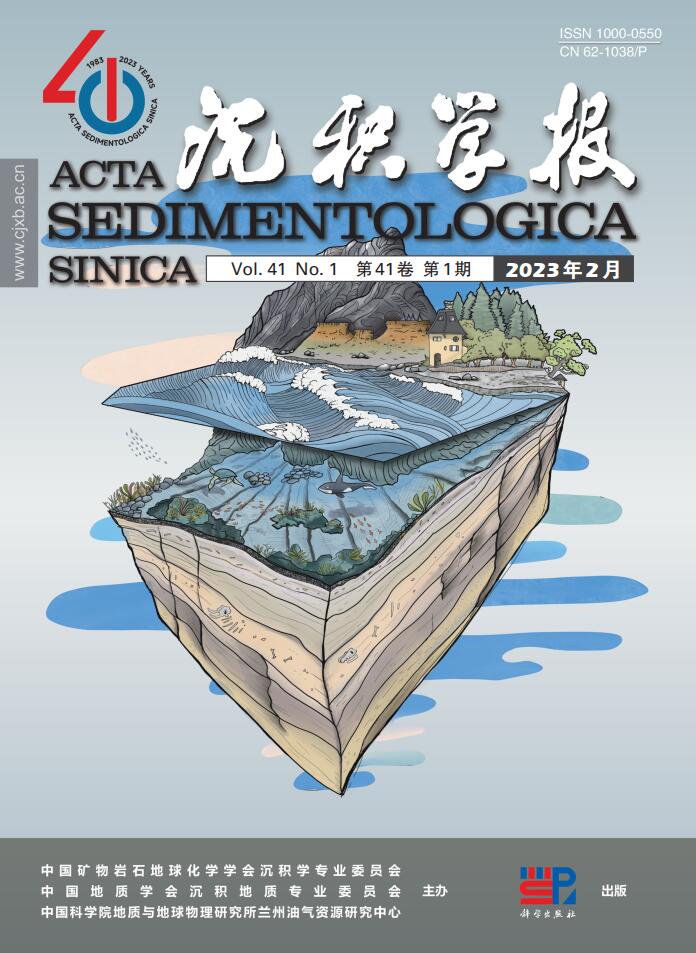


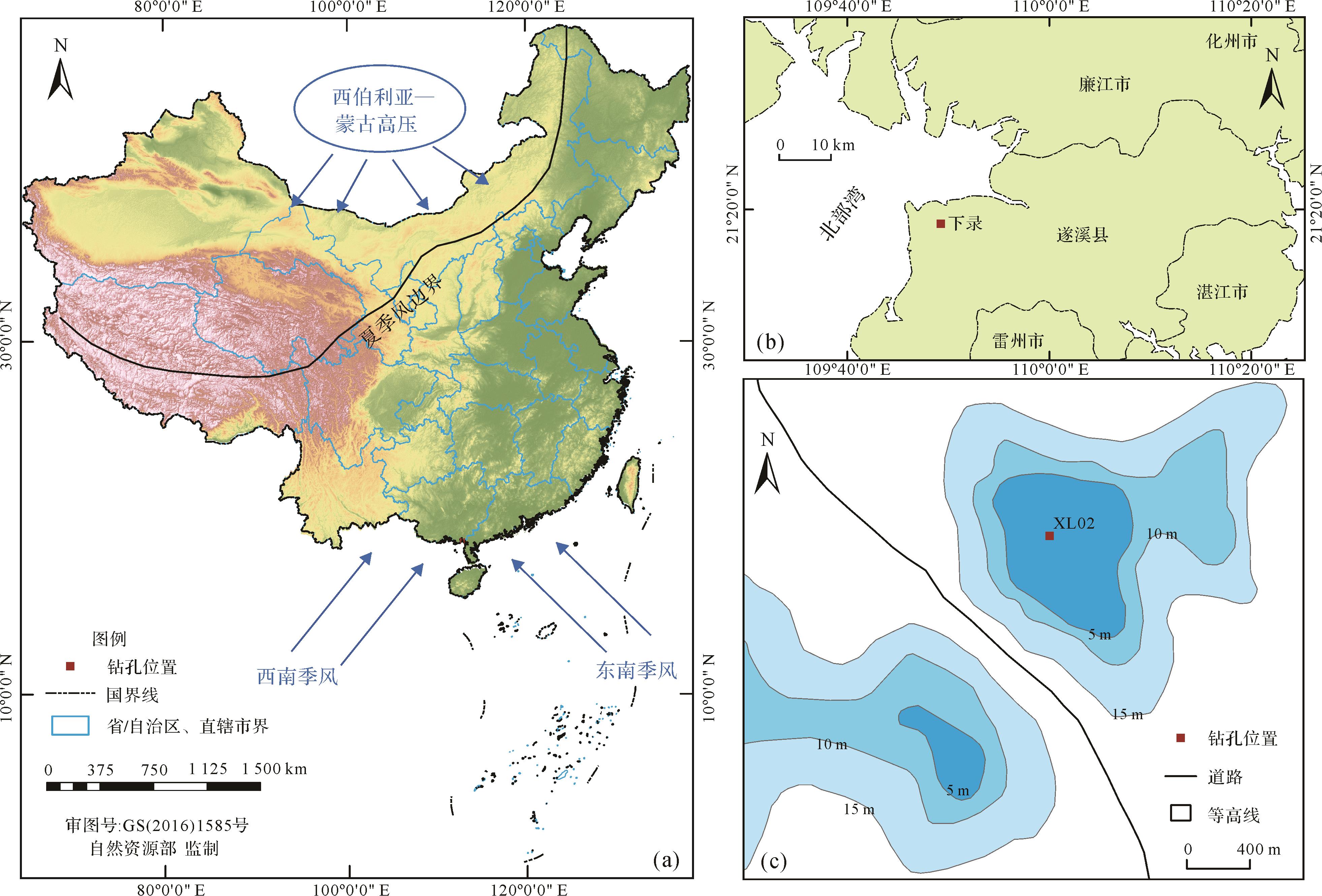






 DownLoad:
DownLoad:
